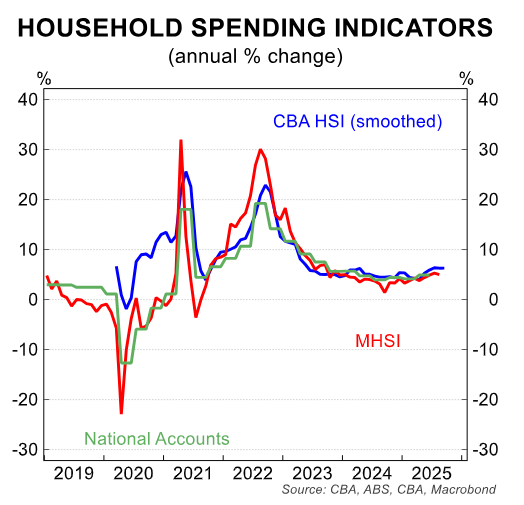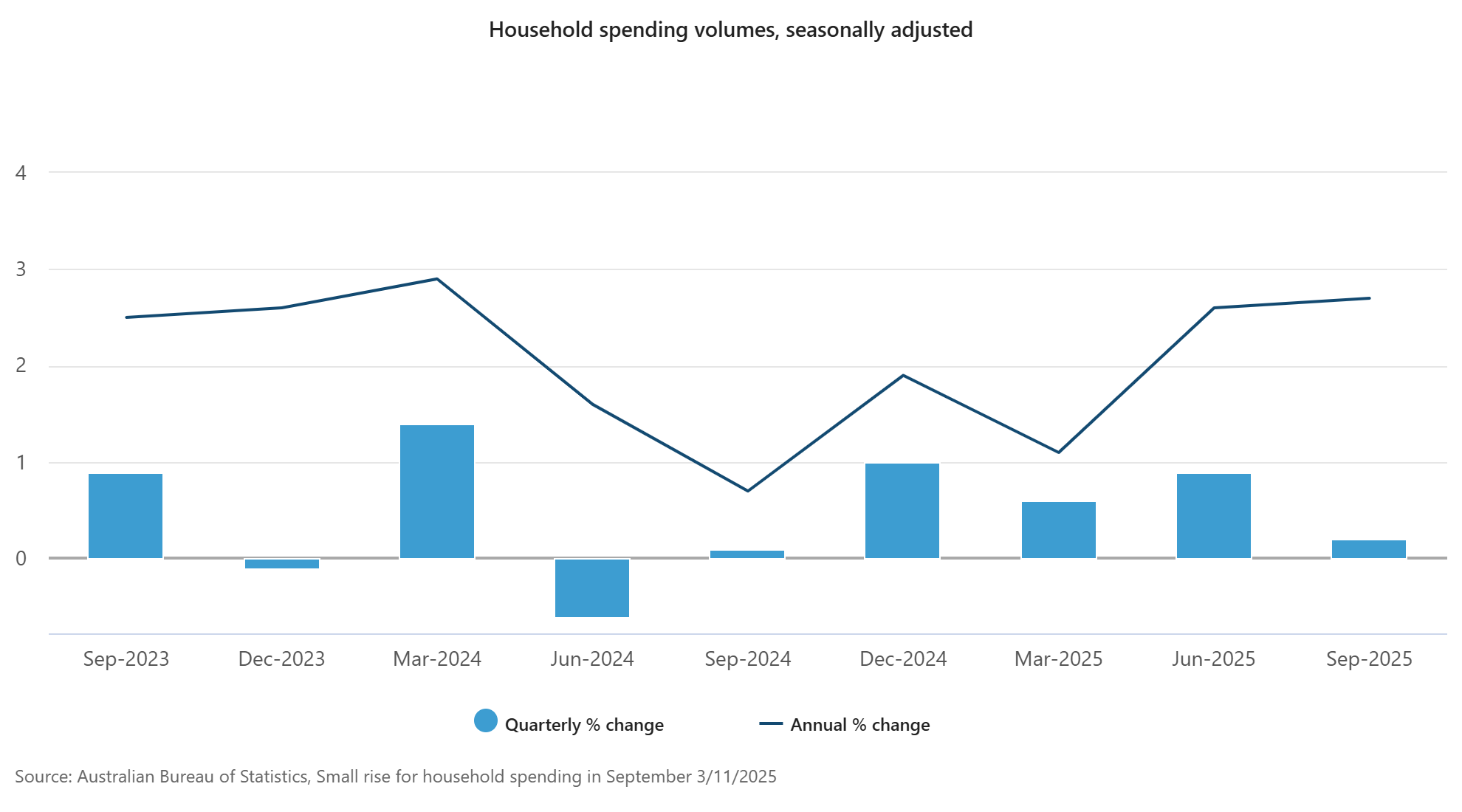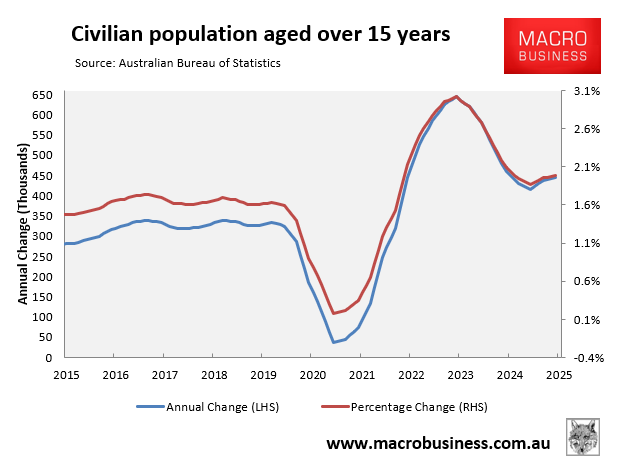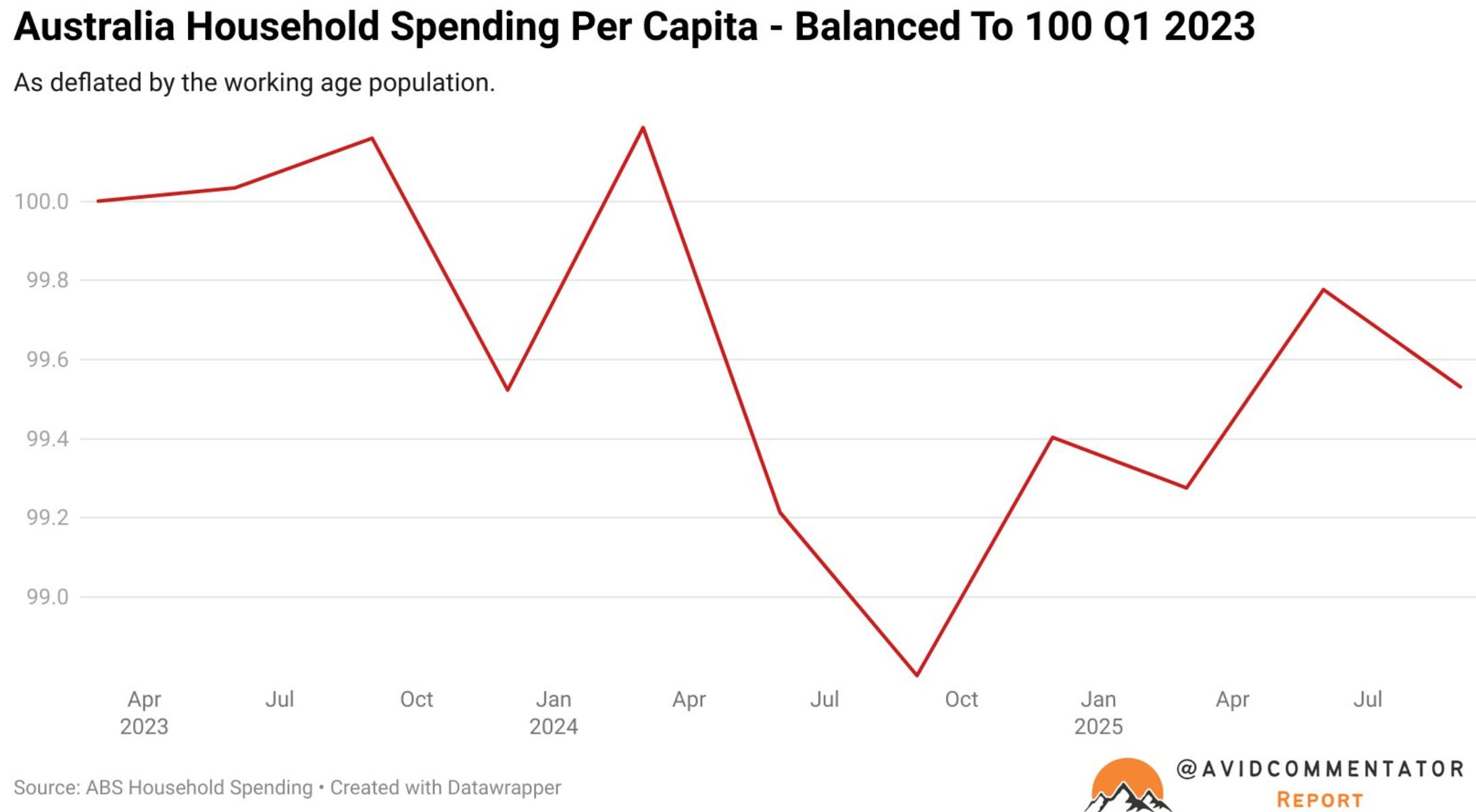Recent data from CBA suggested that Australian households had lifted their spending in response to the Reserve Bank of Australia’s (RBA) three interest rate cuts and modest growth in household disposable income.

However, the September quarter household spending indicator (HSI) from the Australian Bureau of Statistics (ABS), released on Monday, raised doubts over the strength of the consumer rebound.
Aggregate spending volumes increased by only 0.2% in Q3 2025, which is significantly lower than the 0.5% growth in the working-age population.

In annual terms, household spending volumes rose by only 2.7%. While this was the strongest annual growth since the March 2024 quarter, it isn’t exactly ‘strong’ given the 2.0% rise in the working-age population over the same period.

In fact, as Tarric Brooker shows below, household spending was lower in real population-adjusted terms in Q3 2025 than it was in Q1 2023:

With the RBA now likely to keep interest rates on hold for the foreseeable future and wage growth expected to moderate as the unemployment rate edges higher, it’s hard to see how household spending can sustainably accelerate and take over from the government and immigration as the economy’s major growth driver.

